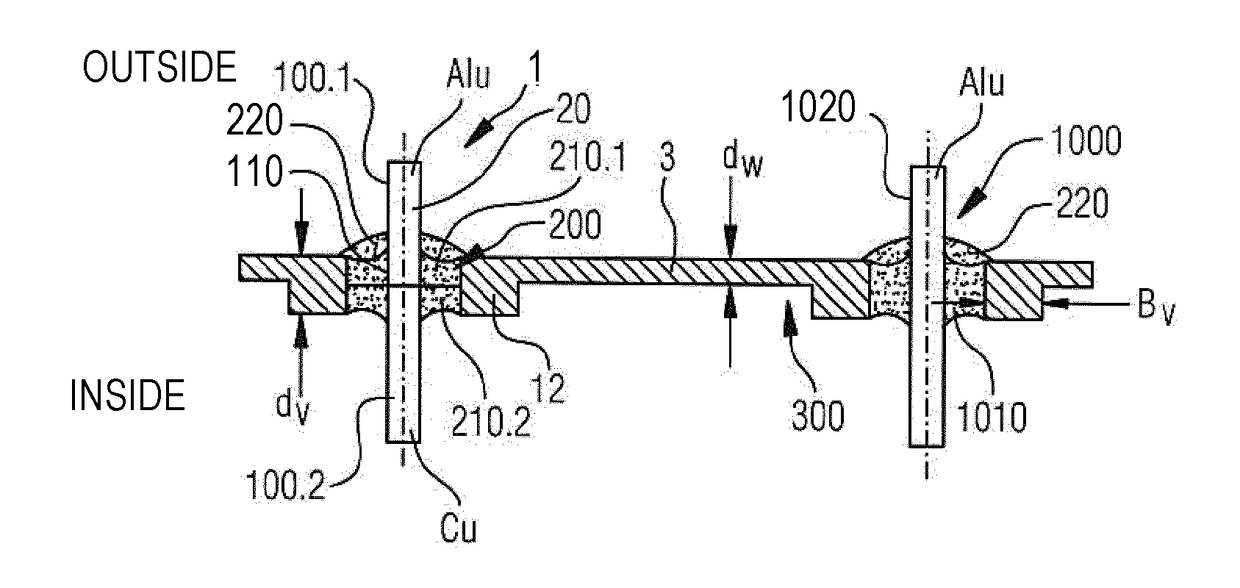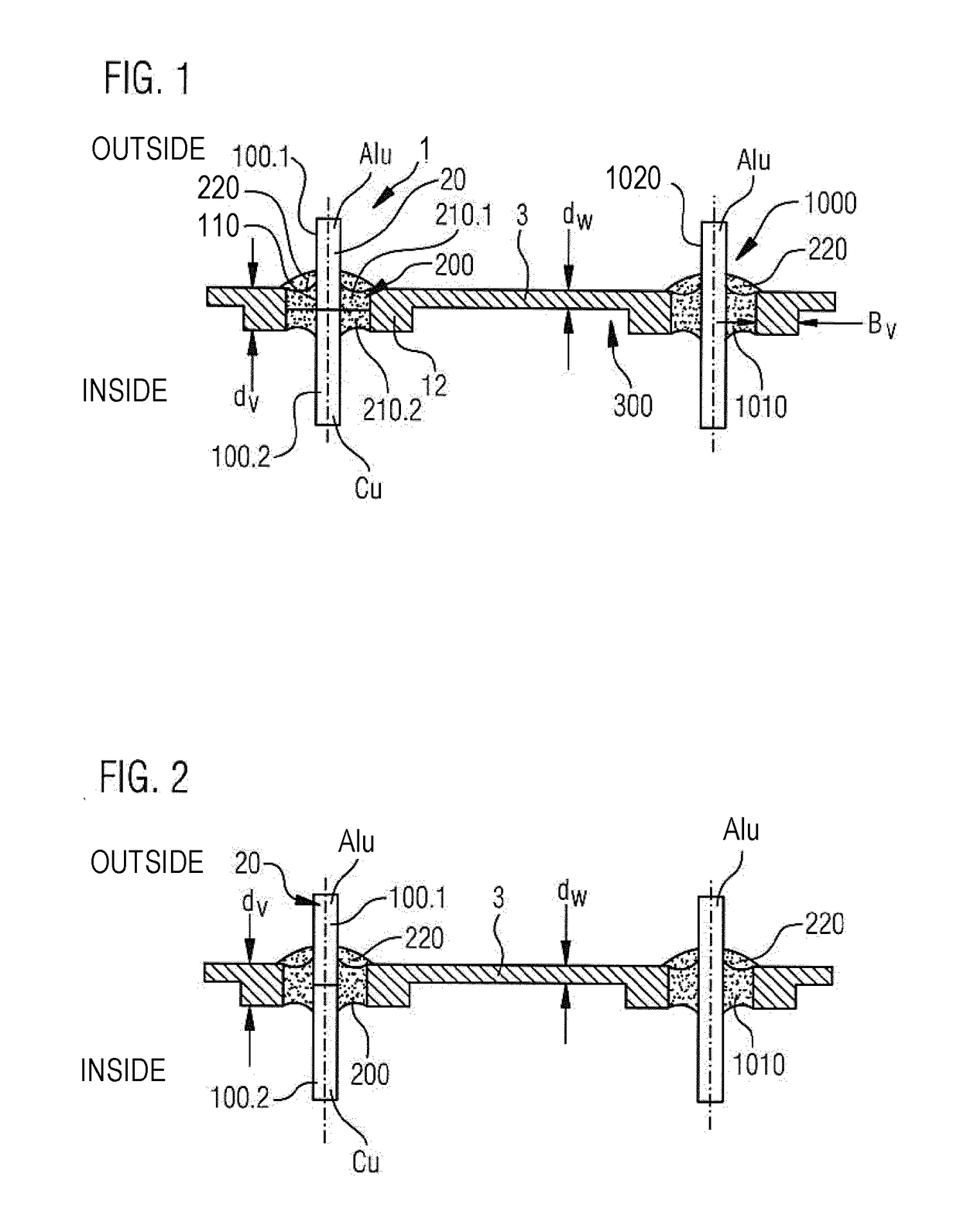Feed-through
a technology of feed and spherical tube, applied in the field of feed through, can solve the problems of affecting the need to solve the stability of accidents or vibration resistance, and the inability to maintain the stability of the cell over an extended period,
- Summary
- Abstract
- Description
- Claims
- Application Information
AI Technical Summary
Benefits of technology
Problems solved by technology
Method used
Image
Examples
Embodiment Construction
[0038]FIG. 1 illustrates a feed-through 1 according to the present invention, that is introduced into a housing, for example into a housing cover 3 of a storage cell housing, such as a battery cell housing.
[0039]The thickness of the housing cover is identified with dw. The battery cell housing or respectively housing cover 3 may be reinforced in the region of feed-through 1. In other words, it may feature a reinforcement region 12 whose thickness is considerably greater than the thickness of housing part dw. The thickness in the reinforcement region 12 is dv. The thickness dv of the reinforcement region 12 in this embodiment provides the glazing length for glass material 200.
[0040]In order to provide the necessary compression force, the reinforcement region 12 is wider in the region of the feed-through than the thickness dw. This means that width By of the reinforcement region 12 is greater than thickness dw of the housing cover 3.
[0041]In feed-through 1 that is connected to the cat...
PUM
| Property | Measurement | Unit |
|---|---|---|
| pressure | aaaaa | aaaaa |
| thermal coefficient of expansion | aaaaa | aaaaa |
| thickness | aaaaa | aaaaa |
Abstract
Description
Claims
Application Information
 Login to View More
Login to View More - R&D
- Intellectual Property
- Life Sciences
- Materials
- Tech Scout
- Unparalleled Data Quality
- Higher Quality Content
- 60% Fewer Hallucinations
Browse by: Latest US Patents, China's latest patents, Technical Efficacy Thesaurus, Application Domain, Technology Topic, Popular Technical Reports.
© 2025 PatSnap. All rights reserved.Legal|Privacy policy|Modern Slavery Act Transparency Statement|Sitemap|About US| Contact US: help@patsnap.com


